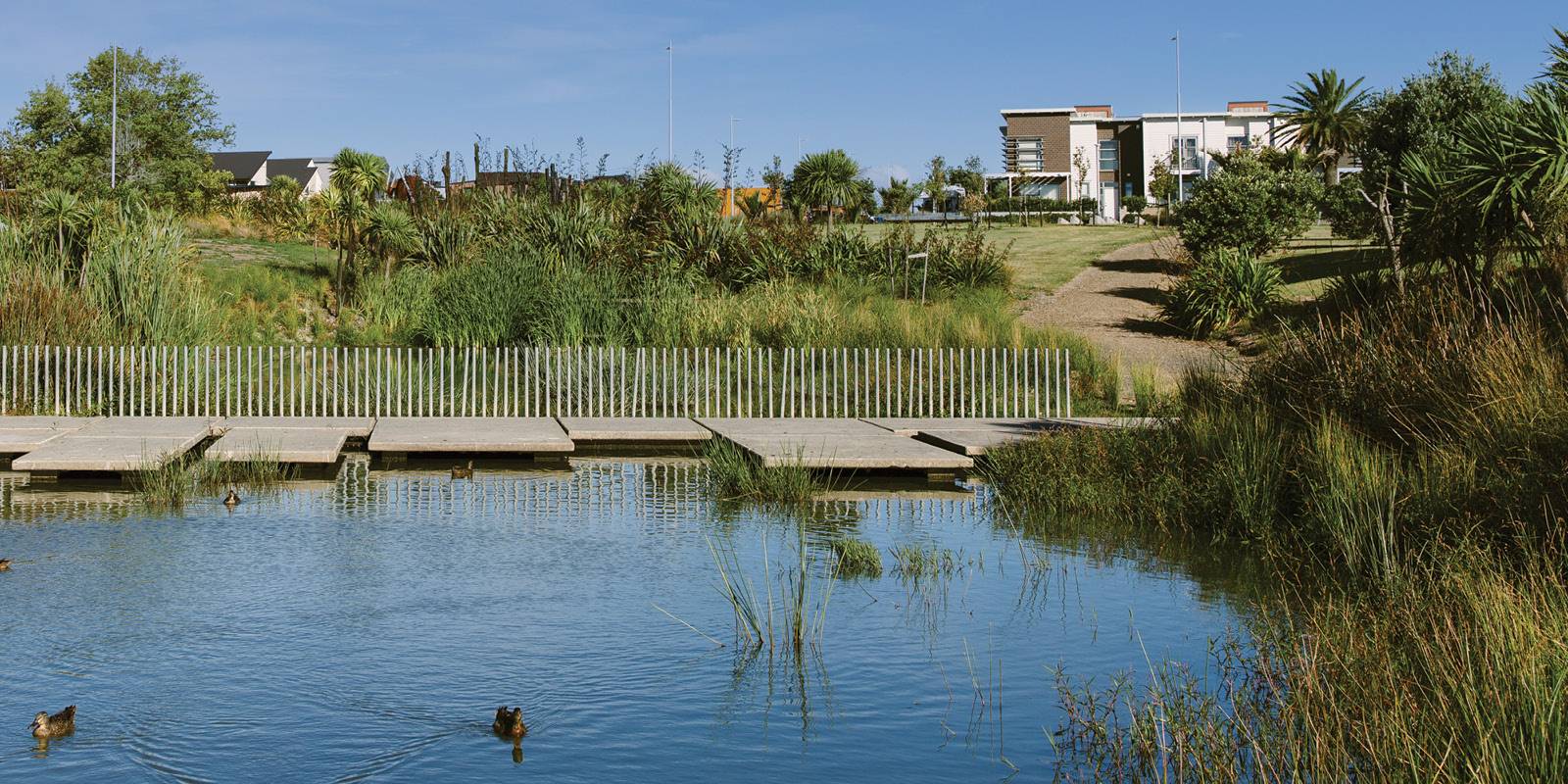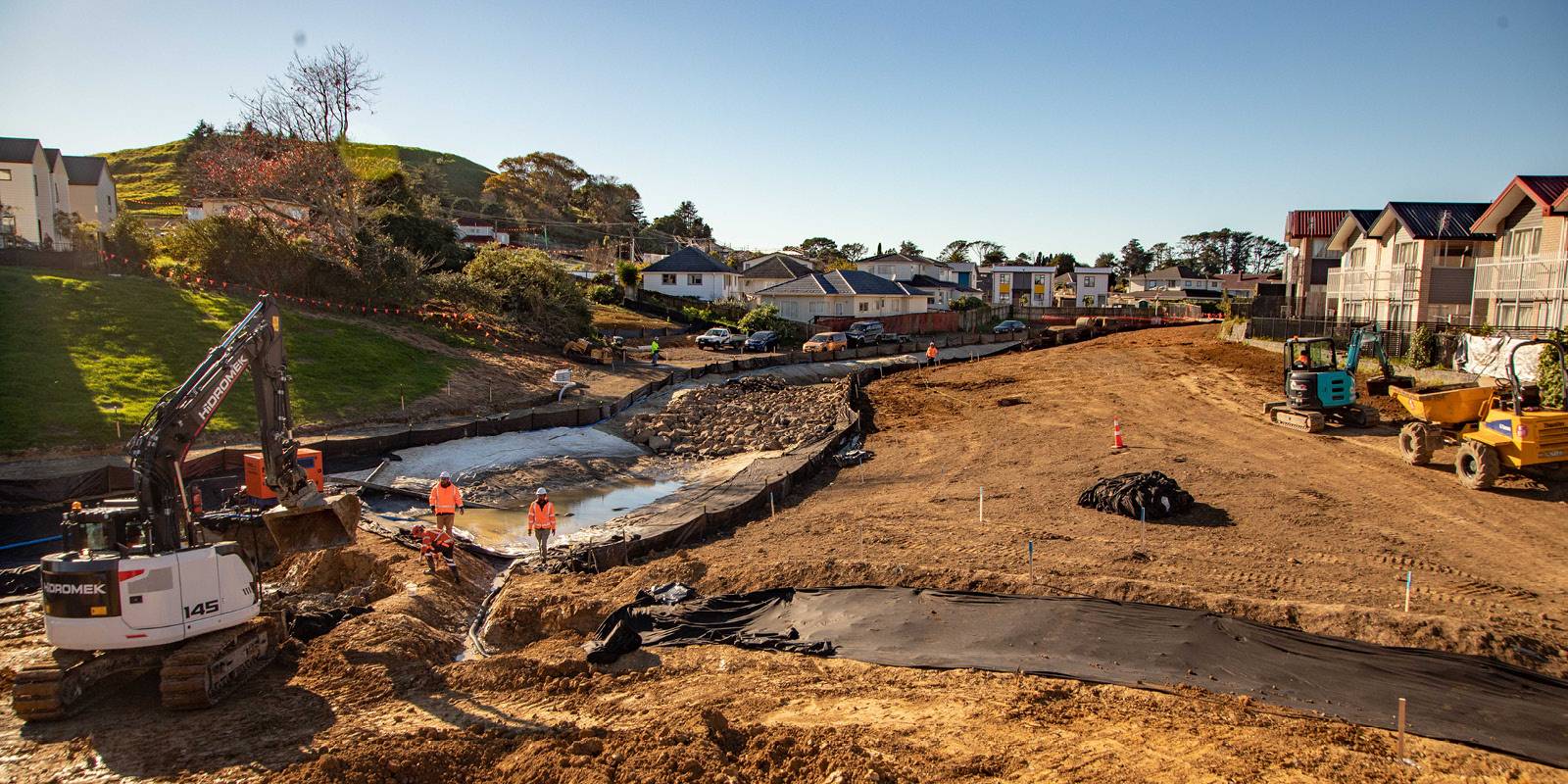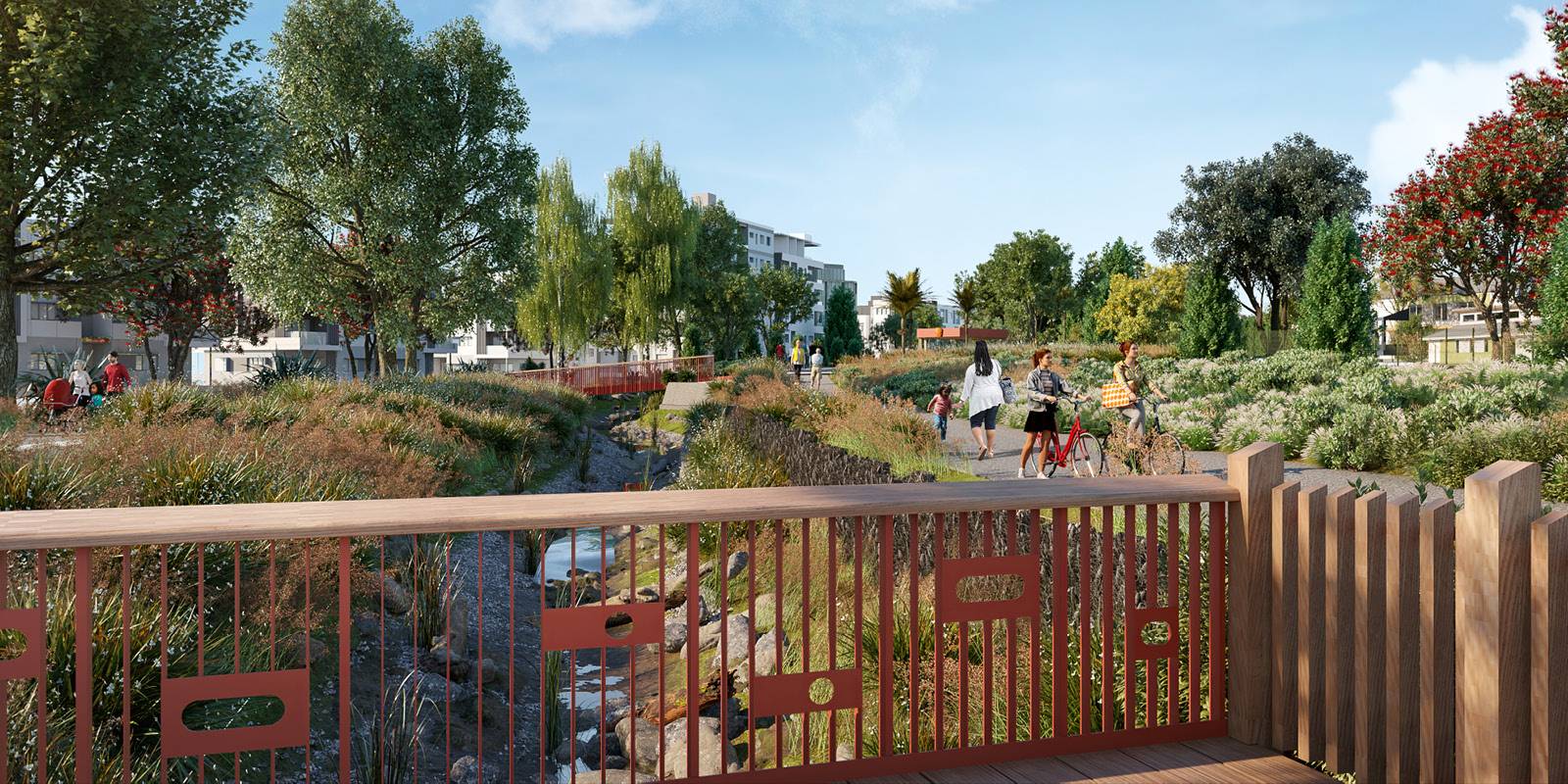Imagine if there were more fish swimming in cleaner waterways as a side effect of your house being built.
What if the pipes and cables underground – the ones that bring you fresh water and provide electricity – also meant your local environment was healthier than it had been for decades? It may all seem a little far-fetched, but this is already becoming a reality.
Kāinga Ora builds homes for Kiwis, but it must also provide the infrastructure – those pipes and cables, as well as roads and more – that makes those homes great places to live. More than 600 separate Kāinga Ora infrastructure projects in our large scale developments like Roskill Development will go ahead over the next 20 years, and 54 are already under way.
Speaking about those projects, Mark Fraser, Kāinga Ora General Manager of Urban Development and Delivery, is clear: “We’re leaving the land better than we are finding it, and I can say that unequivocally.”
His words highlight what it means to provide infrastructure in today’s New Zealand. “When we talk about infrastructure, yeah, it’s the hard stuff like pipes and cables and roads,” Mark says, “but it’s also the things that bring people together and enable successful communities.”
What does any of this have to do with fish?

On the face of it, you might assume a stormwater upgrade simply provides better drainage for a community. For Kāinga Ora, it’s also an opportunity to create benefits that span beyond housing.
“We’re currently finishing a project which has the potential to remove tonnes of fine-grain sediment from the Waitematā Harbour,” says Tamsyn McDonald, Acting Director Large Scale Developments.
“That’s pretty significant from a water clarity perspective, and the clearer the water, the higher the particulate count for invertebrates like plankton and other small fish. Those then spur on larger fish, and it acts as a whole ecological system within our cities,” he says. “The infrastructure work we do can have a material effect on our environment, even though it’s housing related.”
Infrastructure now means things like native and riparian planting, and opening up natural waterways. It means improving soil quality through remediation from things like asbestos and lead – materials left behind from previous generations.
Why doesn’t Kāinga Ora just stick to building homes?
A key operating principle for Kāinga Ora, set out in the legislation from which it was created, is to ensure urban development “contains quality infrastructure and amenities that support community needs”.
Remember those 600 infrastructure projects over 20 years? In Tāmaki Makaurau they will enable more than 36,000 new homes on Kāinga Ora land and another 21,000 on private property.
Those homes will be a mixture of public housing, affordable rentals and sales, and those sold on the open market.
“The work we’re doing – infrastructure, amenity, housing – is being planned and thought of in its entirety,” Mark Fraser says. “We’re not thinking about it one house or one street at a time. We’re looking at it one community at a time, and beyond that – how those communities are linked.”
Public housing customers and affordable homebuyers will benefit from those links, but so too will private developers and simply those looking to build a home of their own.
“Generally we’re upgrading infrastructure to allow for everyone else to develop as well,” says Shanon Tapp, Kāinga Ora Director of Infrastructure and Civil Construction. “We’re not just providing infrastructure for Kāinga Ora land, our work enables a lot of the stuff that’s privately owned as well. It’s going to make it easier for many to build and develop.”
In some places, Kāinga Ora will also sell land to large developers. Homes will need to be built within a specific timeframe and meet design guidelines, and the revenue from those land sales will then be used to enable more Kāinga Ora development.
Before selling that land, Kāinga Ora has already delivered infrastructure to service the new homes. That infrastructure isn’t just for the benefit of new homes, either. A Kāinga Ora stormwater upgrade, for example, will provide better drainage for the entire area. New roads, walkways and parks bring everyone together and help get people to where they need to go.

More infrastructure, more homes, thriving communities.
As Tamsyn says, this infrastructure makes way for more local jobs and for new businesses to open and flourish. “We’re helping ensure these are places where people want to live. By putting the demand back into the suburb, we’re actually allowing other forms of real estate – other than just purely residential – to receive investment.”
But, Mark, Tamsyn and Shanon are all quick to note, Kāinga Ora has no intention of working alone to make this all a reality.
“We can only achieve the ambitions we have for these projects in partnership,” Mark says. At one level, there are partnerships that support vision and history, with iwi, non-government organisations, and community and resident groups who call the area home.
“When we’re seeking to make these improvements or leave these places better than we found them, it’s iwi who are helping us to do that really well,” says Mark.
That shared vision and understanding then flows through the partnerships at an operational level, which includes the likes of councils and their organisations, electricity providers and Government agencies.

“All the pipes, the telecommunications cables, the stormwater, sewers, roads and parks,” Mark says, “often we’ll build them, but we will not own them. Our partners own these assets.”
Shanon goes on to explain that’s because every piece of Kāinga Ora infrastructure work forms part of a much wider network. None of this infrastructure would work in isolation, so nor should it be built this way.
Part of the role of Kāinga Ora, Shanon says, is to bring all of these partners and asset owners together. Doing so can save time, money, and provide a better outcome for communities.
“To put it simply, rather than all of us spending one dollar, we can all chip in 50 cents and get the same outcome,” he says.
Kāinga Ora also works with the Ministry of Education to cater for things like roll growth in schools, and partnerships with the likes of Auckland Transport and Waka Kotahi NZ Transport Agency ensure vital links for commuters.

